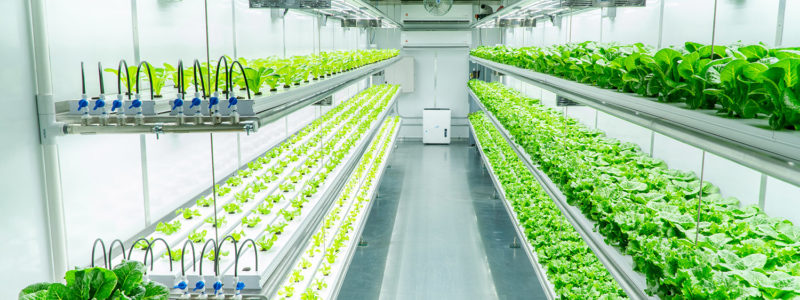Food security has never been more important. Our food supply chain is reliant on being able to grow, process and transport thousands of miles and if any part of the chain should break the consequences can be very serious. With the world’s growing population expected to exceed 9 billion by 2050, the U.S. Department of Agriculture sees indoor vertical farms as having potential in addressing food security. They require less labor, take less space, require less transport and food can be grown year-round.

The Business of Vertical Farming
Indoor vertical farms are expanding across the country. It’s still a startup mentality but does the business logic stack up? A 2019 report in AgFunder Network Partners, estimated that it is 3 to 5 times more costly to grow in a vertical farm compared to conventional farming. It still costs more to raise produce indoors than outside, but as the industry grows in scale and knowledge prices are dropping, and some indoor farms are profitable.
Many experienced vertical farm operators report that technology is reducing costs and that makes the product much more competitive as a result. As more invest in plant science and deploy modern state of the art software, control systems and automation they generate more data on how to optimize production and the business.
That’s why Emirate Flight Catering is building a $40 million vertical farming facility with an enormous 130,000 square foot capacity. Serving 105 airline and 25 airport lounges the facility will produce salad green for over 30,000 meals per day. And it’s not in the agricultural heartland- it’s in the Arabian desert where the farm aims to use 1/2500th of the water used in traditional agriculture.
The ability to produce huge yields in a controllable predictable way, using less resource and labor is incredibly attractive outside the desert too. The ability to grow anywhere means that vertical farms a keystone of urban resilience.

Vertical Farms in the City
By 2050, 2 out of every 3 humans on the planet will live in a city, so it’s critical we have a way of effectively feeding ourselves.
“Generally, fresh produce grown in vertical farms travels only a few miles to reach grocery store shelves compared to conventional produce, which can travel thousands of miles by truck or plane,” states a USDA website article on vertical farms. Producing fresh greens and vegetables close to these growing city-based populations could be a major tool in meeting growing global food demands in a way which is both environmentally responsible and sustainable way. Here the aim is to build resilience by reducing distribution chains to offer lower emissions, providing higher-nutrient produce with the use of high nutrient soils, and drastically reducing water usage and runoff.
Cleaner, tastier food
The produce is grown in sealed, climate-controlled facilities often even without dirt, using the established technology of hydroponics. The result is that pathogen risk is almost nil in comparison to conventional outdoor farming. In the traditional system, the only way to reduce pathogens and bugs is to wash and add more and more processes. Vertical farming safeguards consumers from pathogen spreads such as the recent romaine e-coli contamination.
And the food simply tastes better. This might seems a weak argument but when you consider America’s obesity crisis, teaching kids to eat healthier in a way which supports local economies can only be a useful thing. Children and families who grow up with easy access to healthy food could change the way we eat forever and our attitude to eating healthily.
The business logic behind vertical farms is getting stronger and stronger as more data is being created but it’s just one of the reasons more and more vertical farms are opening. We aim to represent the future for food.







